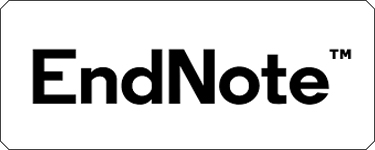PANDANGAN MASYARAKAT MUDA DAN DEWASA PADA PENGGUNAAN KATA-KATA KASAR DALAM PERCAKAPAN
Abstract
Keywords
Full Text:
PDFReferences
Alwi, hasan, dkk. 2003. Tata Bahasa Baku Bahasa Indonesia (edisi ketiga). Jakarta: Balai Pustaka.
Allan, K., & Burridge, K. (2006). Forbidden words: Taboo the censoring of language. New York: Cambridge University Press.
Bourdieu, P. (1982). Language and Symbolic Power. Harvard University Press.
Cameron, D. (2001). Sociolinguistics: An Introduction. Cambridge University Press.
Chambers, J. K., Trudgill, P., & Schilling Estes, N. (2007). The Handbook of Language Variation and Change. Blackwell Publishing.
Debray, C. (2023). Swearing, identity and power in professional interaction. Journal of Pragmatics, 215, 145-158.
Eckert, P. (2000). Linguistic Variation as Social Practice: The Linguistic Construction of Identity in Belten High School. Oxford University Press.
Finn, E. (2017). Swearing: The Good, the Bad & the Ugly. Ortesol journal, 34, 17-26.
Güvendir, E. (2015). Why are males inclined to use strong swear words more than females? An evolutionary explanation based on male intergroup aggressiveness. Language Sciences, 50, 133-139.
Hymes, D. (1974). Foundations in Sociolinguistics: An Ethnographic Approach. Philadelphia: University of Pennsylvania Press.
Irawan dkk. (2020). Karakteristik Bahasa Gaul Remaja sebagai Kreativitas Berbahasa Indonesia pada Komentar Status Inside Lombok di Instagram. Jurnal Bastrindo | Volume I | Nomor 2 |Desember 2020.
Jannah, A., Widayati, W., & Kusmiyati. (2017). Bentuk dan Makna Kata Makian di Terminal Purabaya Surabaya dalam Kajian Sosiolinguistik. FONEMA, 4(2).
Jay, T. (2009). The utility and ubiquity of taboo words. Perspectives on Psychological Science, 4(2).
Kapoor, Hansika. (2014). Swear in the context: The difference between casual and abusive swearing. Journal of Psycholinguistics Research 45(2)
Kristiano, J.T., & Ardi, P. (2018). Swear words in bad boys II: A semantic analysis. LLT Journal:A Journal on Language and Language Teaching, 21 (2)
Labov, W. (1972). Sociolinguistic Patterns. University of Pennsylvania Press.
Lakoff, G. (1973). Language and Woman's Place. Harper & Row.
Lincoln, Y.S., & Guba, E.G. (1985). Naturalistic inquiry. Newburry Park, CA: Sage Publications.
Ljung. (2011). Swearing: A cross-cultural linguistic study. London: Palgrave Macmillan.
Mill, J. S. (1863). Utilitarianism. Clarendon Press.
Wajnryb, R. (2005). Expletive Deleted: A Good Look at Bad Language. New York: Free Press.













